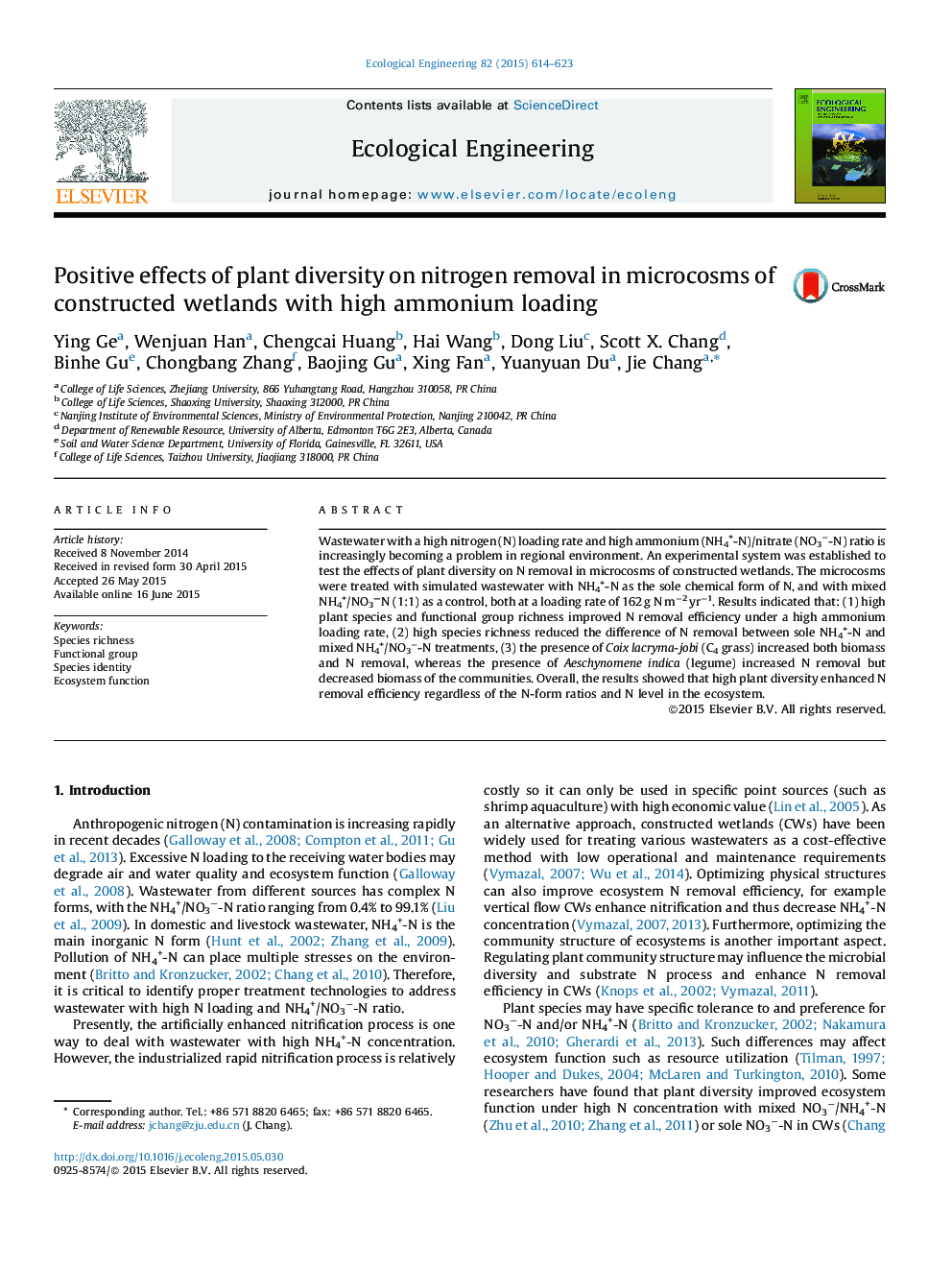| Article ID | Journal | Published Year | Pages | File Type |
|---|---|---|---|---|
| 4389014 | Ecological Engineering | 2015 | 10 Pages |
•Species richness enhanced N removal under influent wastewater with ammonium only.•The presence of certain plant species enhanced N removal efficiency of microcosms.•The effect of species richness on N removal occurred by 62 days after planting.•High species richness reduced the difference of N removal between two N-form ratios.
Wastewater with a high nitrogen (N) loading rate and high ammonium (NH4+-N)/nitrate (NO3−-N) ratio is increasingly becoming a problem in regional environment. An experimental system was established to test the effects of plant diversity on N removal in microcosms of constructed wetlands. The microcosms were treated with simulated wastewater with NH4+-N as the sole chemical form of N, and with mixed NH4+/NO3—N (1:1) as a control, both at a loading rate of 162 g N m−2 yr−1. Results indicated that: (1) high plant species and functional group richness improved N removal efficiency under a high ammonium loading rate, (2) high species richness reduced the difference of N removal between sole NH4+-N and mixed NH4+/NO3−-N treatments, (3) the presence of Coix lacryma-jobi (C4 grass) increased both biomass and N removal, whereas the presence of Aeschynomene indica (legume) increased N removal but decreased biomass of the communities. Overall, the results showed that high plant diversity enhanced N removal efficiency regardless of the N-form ratios and N level in the ecosystem.
